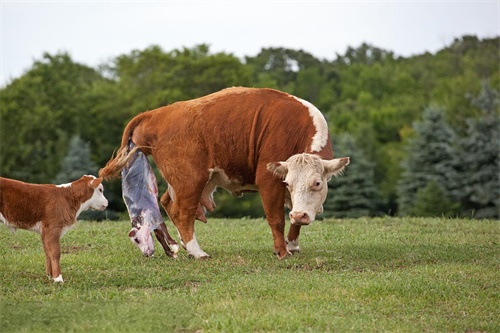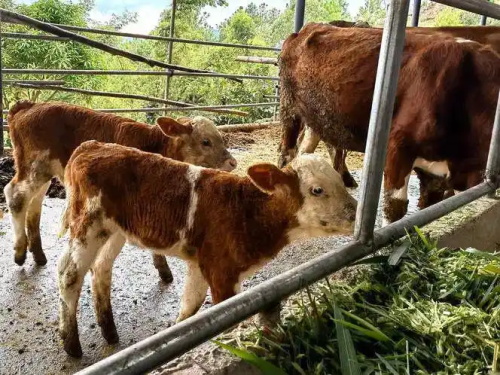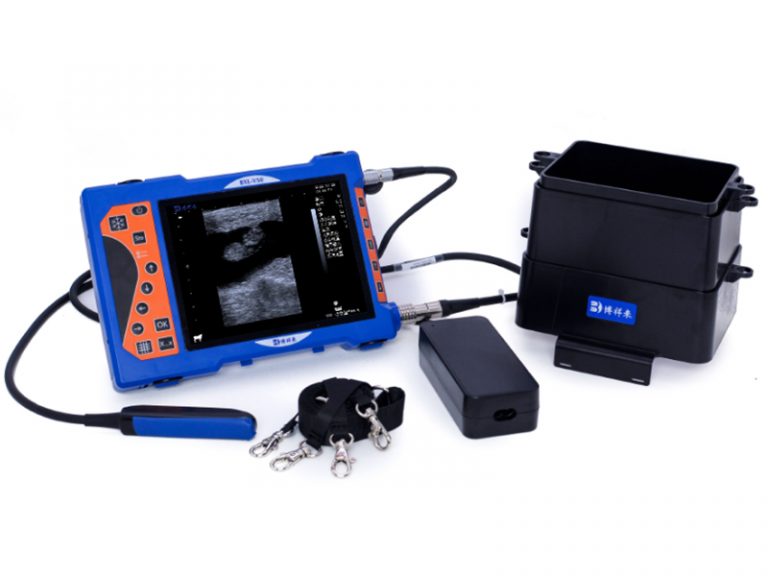BXL Wireless Veterinary Ultrasound Instrument for Cows Cotyledons
Reproductive health is essential to the success of any cattle farming operation. Efficient breeding, early pregnancy detection, and the prevention of complications are critical to maintaining a productive herd. One of the most valuable tools available for monitoring reproductive health in cows is the BXL Wireless Veterinary Ultrasound Instrument for Cotyledons. This advanced diagnostic device enables farmers and veterinarians to gain clear, real-time insights into the cow’s pregnancy status, specifically by assessing the condition of the cotyledons—an important part of the placental structure. In this article, we will explore how the BXL wireless ultrasound helps with cotyledon monitoring and why it is indispensable for effective reproductive health management.
What Are Cotyledons in Cows?
Cotyledons are specialized areas on the placenta of ruminant animals, including cows, that facilitate the exchange of nutrients and waste products between the mother and the developing fetus. The cotyledons are an essential part of pregnancy monitoring because they play a key role in fetal development and overall pregnancy health. Any abnormalities or issues with the cotyledons can lead to complications during pregnancy, affecting both the health of the cow and the developing calf.
By monitoring cotyledons, veterinarians can detect early signs of pregnancy complications, such as fetal stress or placental issues, which can result in preterm labor, fetal death, or other adverse outcomes. The BXL Wireless Veterinary Ultrasound Instrument provides a highly effective method for evaluating the health and condition of the cotyledons, enabling early intervention and improved outcomes.
How Does the BXL Wireless Veterinary Ultrasound Monitor Cotyledons?
The BXL Wireless Veterinary Ultrasound Instrument for Cows works by emitting high-frequency sound waves through a probe, which then bounces off internal tissues, including the uterus and placental cotyledons. The device converts these echoes into clear, high-resolution images displayed on a digital screen, allowing veterinarians and farmers to visualize and assess the condition of the cotyledons.
Here’s how the BXL ultrasound can be used for cotyledon monitoring:
- Detecting Placental Abnormalities: The ultrasound helps identify any abnormalities in the cotyledons, such as insufficient placental attachment, underdevelopment, or infection. These issues could indicate potential problems with the pregnancy or fetal health.
- Monitoring Placental Function: The BXL ultrasound helps assess the functionality of the cotyledons, providing insight into the effectiveness of nutrient and oxygen transfer between the cow and fetus. Poor placental function can result in poor fetal growth or complications during delivery.
- Early Pregnancy Detection: While the BXL ultrasound is primarily used to monitor cotyledons, it is also highly effective in early pregnancy detection, allowing farmers to determine pregnancy status as early as 30 days post-insemination. Early detection enables optimal breeding management and herd productivity.
- Assessing Pregnancy Viability: By assessing the condition of the cotyledons and the overall health of the placenta, veterinarians can determine whether the pregnancy is progressing normally. If any issues are detected, early interventions can be made to avoid more serious complications down the road.
Why Is Monitoring Cotyledons Important for Cattle Health?
Monitoring cotyledons is crucial for several reasons, particularly related to fetal health and pregnancy success:
- Early Detection of Pregnancy Complications: Abnormalities in the cotyledons may indicate issues with the placenta, which could affect the viability of the pregnancy. Monitoring cotyledons helps identify problems such as placental insufficiency, infections, or detachment, which can lead to premature birth or fetal loss.
- Improved Breeding Success: By understanding the health of the placenta and the fetus, farmers and veterinarians can make more informed decisions about when to breed cows again, optimizing breeding schedules and improving fertility rates.
- Preventing Fetal Stress: Placental problems can lead to reduced oxygen and nutrient delivery to the fetus, resulting in fetal stress. Regular monitoring of cotyledons allows for early intervention and reduces the likelihood of stress-related complications during pregnancy.
- Better Calf Health: Healthy cotyledons contribute to better fetal development, ensuring that calves are born healthy and strong. By monitoring cotyledon health, farmers can ensure that calves receive the nutrients they need for optimal growth.
- Improved Herd Management: Regular ultrasound checks of cotyledon health allow farmers to detect early signs of reproductive or health issues in cows, ensuring that problems are addressed before they affect the herd’s overall productivity.
Benefits of the BXL Wireless Veterinary Ultrasound for Monitoring Cotyledons
- Non-Invasive and Stress-Free: Unlike invasive procedures, the BXL wireless ultrasound provides a painless, non-invasive method for monitoring cotyledons and assessing pregnancy health. This reduces stress for the cows and ensures better animal welfare.
- Portable and Convenient: The wireless design makes the BXL ultrasound highly portable and easy to use in various settings, from barns to pastures. Veterinarians and farmers can quickly assess the health of the cow and her pregnancy without the need for large, stationary equipment.
- Real-Time Imaging: The real-time imaging capability allows for immediate decision-making. With clear, high-quality images of the cotyledons and other reproductive organs, veterinarians can quickly identify problems and provide timely solutions.
- Cost-Effective: While the initial investment in the BXL ultrasound may be significant, its ability to detect issues early saves farmers money by preventing complications that could lead to costly treatments, failed pregnancies, or lower productivity.
- Easy to Use: The BXL ultrasound features a user-friendly interface, making it easy for both veterinarians and farmers to operate the device with minimal training. This makes it a convenient tool for everyday use.
Key Features of the BXL Wireless Veterinary Ultrasound for Cotyledons
- High-Resolution Imaging: The ultrasound provides clear, detailed images that help veterinarians assess the condition of cotyledons and other reproductive organs with precision.
- Wireless Design: The wireless feature ensures maximum mobility and convenience, enabling on-the-go assessments and monitoring without the need for bulky equipment.
- Real-Time Results: The real-time imaging feature allows for quick analysis and immediate decision-making, reducing delays in addressing reproductive health issues.
- Durability: Built to withstand the harsh conditions of a farm environment, the BXL ultrasound is rugged, reliable, and ready for use in any setting.
- Long Battery Life: The rechargeable battery offers extended usage time, allowing for multiple assessments before needing to recharge.
Why Choose the BXL Wireless Veterinary Ultrasound for Cotyledon Monitoring?
The BXL wireless veterinary ultrasound stands out for its precision, portability, and ease of use, making it the ideal choice for monitoring cotyledons in cattle. Here’s why it is the go-to solution for modern cattle farms:
- High Accuracy: Provides detailed, accurate imaging of the cotyledons, allowing for early detection of pregnancy-related issues.
- Convenient and Mobile: Its wireless design makes it easy to use in the field, barn, or pasture, increasing efficiency and flexibility.
- Comprehensive Reproductive Health Monitoring: In addition to monitoring cotyledons, the ultrasound also assesses overall reproductive health, improving herd management and fertility rates.
Conclusion
The BXL Wireless Veterinary Ultrasound Instrument for Cotyledons is an indispensable tool for farmers and veterinarians focused on maintaining reproductive health in cows. By offering early, non-invasive detection of pregnancy complications, placental health, and fetal development, this ultrasound device provides valuable insights that help improve breeding success, herd productivity, and animal welfare. With its portability, real-time imaging, and user-friendly design, the BXL ultrasound is an essential asset for any cattle operation looking to optimize reproductive health and ensure the long-term success of their herd.






Tried this on one of my older dairy cows last month. The image clarity around the cotyledon areas really surprised me—didn’t expect this level of sharpness from a wireless model. The probe connected fast, no lag, and battery held through multiple scans. Not cheap, but if you’re running a mid-size farm like mine, it’s worth the upgrade.